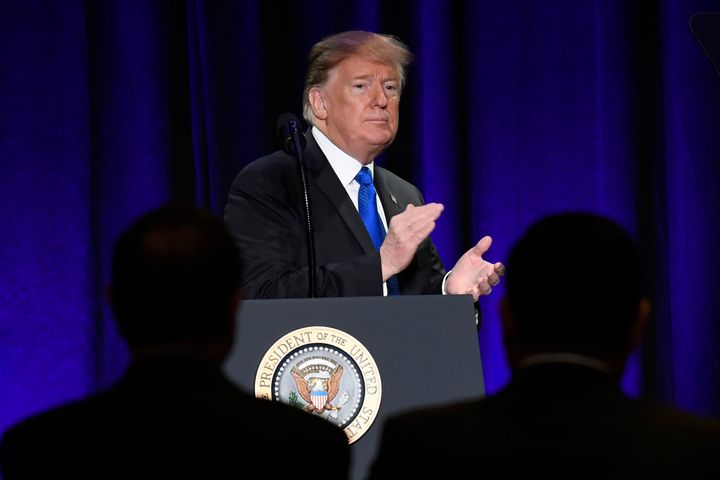US President Donald Trump has declared a state of emergency over funding his campaign promise to build a wall on the US-Mexico border, adding that “walls work”.
The move – which comes after congress refused to fund the project – will allow Trump to use executive powers and spend billions of dollars on it.
The president originally vowed Mexico would pay for the construction.
“I am going to be signing a national emergency,” Trump announced from the Rose Garden at the White House on Friday, as he claimed illegal immigration marked “an invasion of our country”.
Found yourself asking: “What emergency?” Well, it’s a valid question.
Despite Trump’s desperate attempts, border crossings into the US are actually at an all-time low, with drug smuggling mostly taking part through legal entry points.
The move comes after the president approved a Congress spending bill to avoid another shutdown (see our handy guide if you want more background), which also granted him nearly $1.4bn towards extra fencing on the border.
However, he could use his executive powers to re-route disaster funds earmarked for the aftermath of events such as the California wildfires to reach his target for the entire project, which is almost $6bn.
What Is A State Of Emergency?
The call allows the US government to enact powers that would not normally be summoned under normal circumstances.
It puts departments into emergency mode, with 123 statutory powers made available to the government, from military to agricultural procedures.
When Is It Usually Declared?

It is normally called upon in a crisis, or when national security is threatened. A state of emergency was called after 9/11, for example.
The US has so far declared 58 states of emergency since 1979, according to the Brennan Center for Justice. Barack Obama declared a state of emergency during the swine flu epidemic a decade ago, in a bid to ensure proper patient care.
Trump’s plan is unprecedented, and campaigners warn it could set a dangerous blueprint, as the move has never before been invoked over a campaign promise that lawmakers do not agree on.
The move allows Trump to act without Congress, which controls the government purse strings.
Where Will The Money Come From?
It is not immediately clear which departments trump will siphon money from, but the move could see billions of dollars taken out of funds reserved for disaster recovery – money which has been earmarked by the Pentagon, the US Department of Defence.
Funds put aside for reconstruction efforts in California, parts of which were recently gutted by wildfires, as well as for reconstruction efforts in hurricane-ruined Puerto Rico could also be re-routed into paying for the obstruction. Taking money from those efforts would get Trump nearly $5bn, not far from his $5.7bn total.
Resident Commissioner of Puerto Rico, Jenniffer González, wrote to the president on Thursday, saying: “Seventeen months after the impact of Hurricane Maria, these projects remain critical for the recovery and economic resurgence of the people of Puerto Rico”.
After two years of effort, Trump has not added any new border mileage, and all construction so far has gone in replacing and repairing existing structures.
What Will The Consequences Be?
Lawsuits, lawsuits, and more lawsuits. Officials from the Puerto Rican government have said they will take immediate legal action should Trump divert their much-needed cash.
It is thought House Democrats and other parties who are threatened with stripped funds could also sue Trump and attempts are expected to be made to block the move through legislation.
House Speaker Nancy Pelosi called the proposed move a “gross abuse of the power of the presidency”.
Senator Marco Rubio is among a number of Republicans denouncing Trump’s call, warning last month that it could set a bad precedent.

